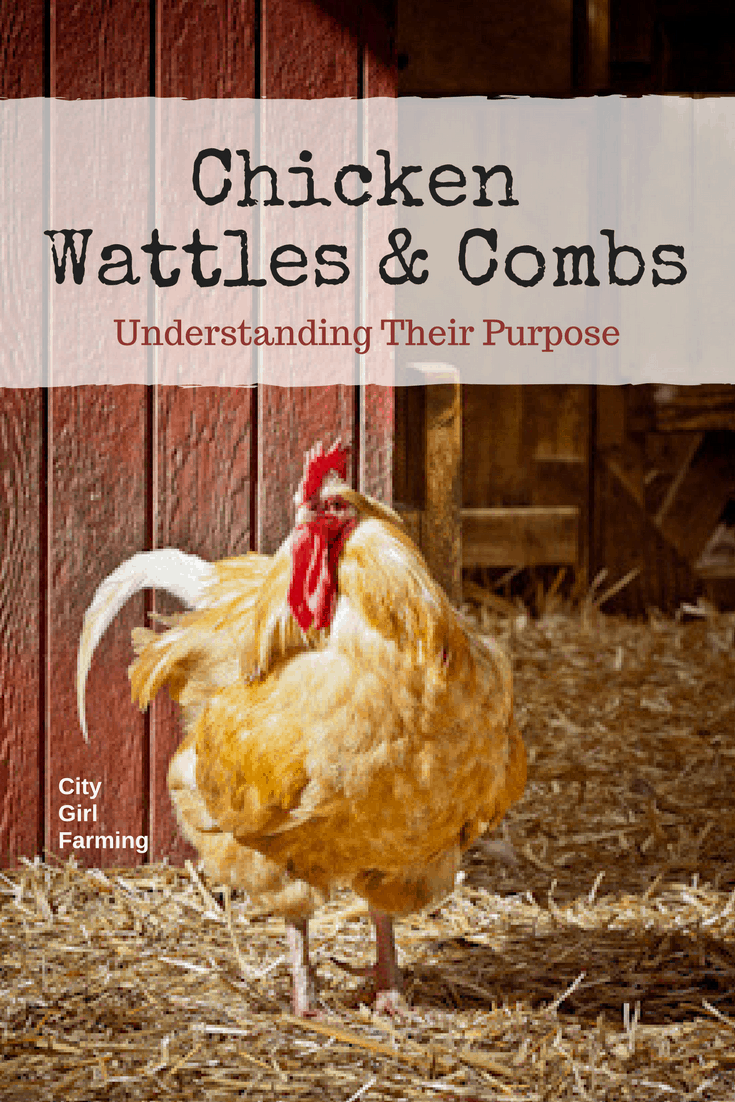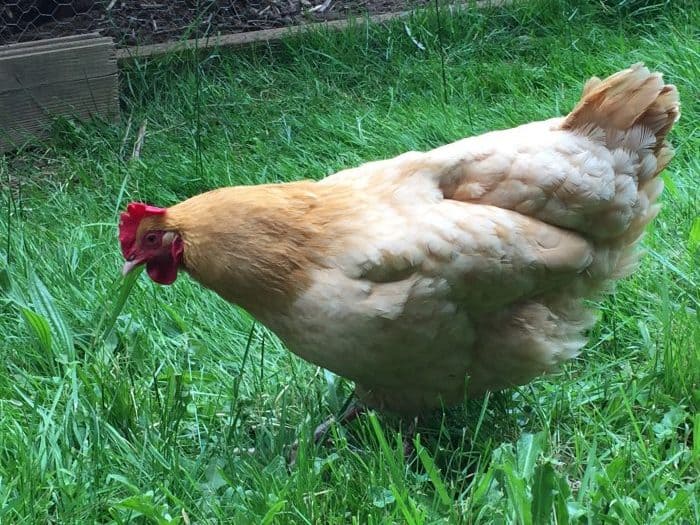Have you ever looked at a chicken and wondered why in the world they have wattles and combs? It is just a pretty (or not, depending on how you view it) addition to their heads, or do they serve some other purpose? Today, let’s talk a bit about chicken wattles and combs and shed some light on the mystery!

Chicken Wattles and Combs 101:
Both the wattles and comb on your chickens are the fleshy (usually some sort of reddish) flaps of skin on top of the head and under the beak. It seems to be a fairly common assumption that only roosters have wattles. It’s not true! Both hens and roosters grow wattles, although a roosters wattles are usually larger than a hens. 
Combs are HOT
At least if you’re a rooster. Apparently roosters see a hen’s comb as something a bit sexy. Aside from being rooster-attraction-device, the comb serves another important function: it’s a chicken coolant machine (heats up the rooster, cools down the hen…hmmmmm go figure!). As blood circulates through the both the comb and wattles, it releases heat, helping to keep the chickens cooler in the summer.
It’s thought that combs might possibly have a warming effect in the colder weather as well. As sunlight hits the comb directly, it serves as a heating device.
If you take note, you’ll see that most breeds of chickens that best tolerate hot temperatures will have larger combs and wattles (more surface area to keep them better cooled) and many breeds that are winter hearty have very small combs (to help keep them from freezing in the winter). Olivia, below, is a California Gray, a breed that does well in warmer climates. She has a HUGE comb and larger than many wattles. She’s ready to turn on the built-in air conditioner and skate through the summer temperatures!

What Comb Color Can Tell You
Besides sex appeal and cooling, the color of the comb can tell you a lot about the health or age of your chicken. Generally speaking, a chicken’s comb and wattles should be some shade of red or dark pink. But what if they’re not?
A pale pink comb could mean a few different things. Some of them more serious than others.
- Your pullet who is not at egg-laying age will probably have pink comb and wattles. As she matures, her comb color should deepen.
- Your chicken might possibly be suffering from mites, lice or internal parasites (which can make them anemic).
- A possible indication that your chicken is suffering heat exhaustion.
- The comb might pale (and even shrink a bit) during molting, but should resume normal color afterwards.

A super dark red or purple comb might mean there’s a circulation or respiratory problem. This usually happens first in the tips of the comb, as a sign that the air circulation isn’t fully getting where it needs to go. When this has happened with my hens, it’s often accompanied by their ‘Darth Vader’ like breathing and I set them up with a diffuser blowing Breathe Respiratory Blend essential oils into the air around them to help open up their airways.
This dark red or purple comb color can also indicate a stroke, heart attack or choking on something.
A comb with spots could also mean a few different things.
- Black spots (and sometimes white) could mean that they’re getting picked on by the others and it’s a scabby peck mark healing over
- Black spots (or patches) that turn white and then back to black might be frostbite
- Brown or black spots could signal fowl pox (like chicken pox for chickens). Fowl pox will also be accompanied by other signs of sickness such as weight loss, disinterest, slow movements, etc.
If your chicken’s comb is suddenly floppy (falling over) when it’s usually upright, that could be a sign of sickness (when accompanied by sluggish behavior) like Goldie in the photo below. A floppy comb is usually a sign of dehydration (a comb is largely made up of water, so keeping your flock well hydrated is important for proper comb and wattle health.

The Girls Swoon Over Wattles
Wattles perform that same function as a comb, in helping to cool down the body temperature of the chicken. Interestingly, though, it’s the rooster’s wattles that contain the sex appeal for hens. Macquarie University conducted research using animated roosters and found that the hens responded less quickly to the roosters without wattles. Some research also suggests that the size of a rooster’s wattles is correlated to how much testosterone is present in the roo, which also might help explain the attraction.

Now that you’re all educated on the finer details of chicken wattles and comb, you can better gauge their health (and their sex-appeal)!